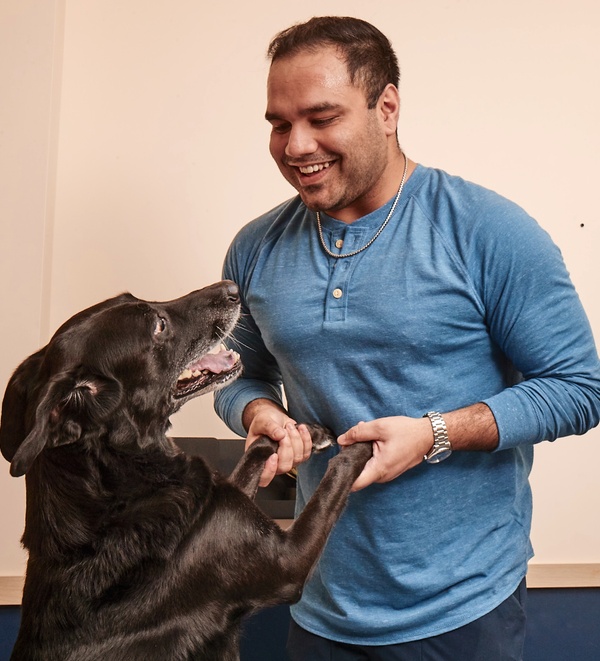Caring for a dog is a rewarding experience, but it also comes with responsibilities. Just like humans, dogs thrive on structure. A consistent daily routine not only helps your dog feel safe and secure, but it also supports their physical health and mental well-being. In this article, we’ll guide you through creating a healthy, sustainable daily routine for your furry friend — one that suits both your schedule and your dog’s needs.
Why Dogs Need a Routine
Dogs are creatures of habit. Predictability gives them a sense of security and lowers their stress levels. A routine can help prevent behavioral problems, reduce anxiety, and improve training outcomes. Whether you work from home or are away during the day, a solid routine helps your dog know what to expect — and that leads to a happier, more balanced pet.
Morning: Start the Day Right
1. Morning Potty Break
As soon as you and your dog wake up, the first task should be a bathroom break. Holding it in too long can cause discomfort or even urinary issues. This is especially important for puppies or senior dogs who may not have as much bladder control.
2. Feeding Time
After the morning potty break, it’s time for breakfast. Feed your dog around the same time each morning to regulate their digestion and appetite. Choose a high-quality, balanced dog food suited to their breed, size, and activity level. Avoid feeding immediately before vigorous exercise to prevent issues like bloat.
3. Morning Walk or Exercise
A brisk walk or some playtime in the morning helps burn off excess energy and sets a calm tone for the day. Even 15–30 minutes of moderate activity can make a big difference in your dog’s behavior, especially for high-energy breeds.
Midday: Keeping Things Calm and Consistent
1. Midday Bathroom Break (if possible)
If you’re home or have a dog walker, a midday potty break is ideal. For adult dogs, especially those home alone, this helps prevent accidents and breaks up their day. Puppies will need more frequent breaks.
2. Enrichment Activities
Dogs left alone for long periods can become bored and anxious. Offer stimulating toys like puzzle feeders, frozen KONGs filled with treats, or hide-and-seek games with snacks. These activities keep their minds engaged and discourage destructive behavior.
3. Quiet Time
After enrichment, allow your dog to rest. Dogs sleep between 12–14 hours a day on average. Midday is a good time for a nap, especially in a quiet, cozy spot they associate with safety.
Evening: Time for Connection and Calm
1. Evening Potty Break
When you get home or as the evening begins, take your dog out for a bathroom break. Make it a part of your return routine if you’re gone during the day — it reinforces good habits and gives your dog something to look forward to.
2. Playtime or Walk
Evenings are a great time for a longer walk or more energetic play. This helps your dog release any pent-up energy and makes winding down later easier. Vary the route sometimes to introduce new smells and sights — it’s like reading a new book for your dog.
3. Dinner Time
Feed your dog at the same time each evening. Keeping mealtimes consistent helps with digestion and routine potty habits. Make sure they have fresh water available at all times.
4. Training and Bonding
Evening is also a good time to reinforce training. Short, fun sessions of 5–10 minutes can be very effective. Use treats and positive reinforcement. Also, spend time simply cuddling or being close to your dog — physical contact builds trust and deepens your bond.
Night: Preparing for Bed
1. Final Potty Break
Just before bed, let your dog out one last time. This prevents overnight accidents and helps them settle in for the night comfortably.
2. Wind-Down Routine
Turn off loud noises, dim the lights, and encourage your dog to settle in their sleeping area. Whether your dog sleeps in a crate, dog bed, or with you, make sure their space is clean, comfortable, and consistent every night.
Sample Daily Schedule
| Time | Activity |
|---|---|
| 7:00 AM | Morning potty break |
| 7:15 AM | Breakfast |
| 7:30 AM | Morning walk/play |
| 12:00 PM | Midday potty break & enrichment |
| 1:00 PM | Quiet time/nap |
| 5:30 PM | Evening potty break |
| 6:00 PM | Evening walk or play |
| 7:00 PM | Dinner |
| 8:00 PM | Training/bonding |
| 9:30 PM | Final potty break |
| 10:00 PM | Sleep |
This is just a general template and should be adjusted to fit your dog’s specific needs.
Tips for Sticking to the Routine
- Be consistent: Try to stick to the same times every day, especially for meals and bathroom breaks.
- Stay flexible: Life happens — if you miss a walk or delay feeding, just get back on track the next day.
- Use reminders: Alarms or a whiteboard schedule can help you (and others in the home) stay on track.
- Observe and adjust: Every dog is different. Watch how your dog responds and tweak the routine as needed.
What If Your Schedule Changes?
Dogs are adaptable, especially when change is introduced gradually. If you’re shifting your routine (starting a new job, moving, etc.), try to make changes in 15–30 minute increments over a few days. Maintain key elements like feeding and potty times if possible.
Final Thoughts: A Happy Dog Is a Balanced Dog
A solid daily routine doesn’t just help with potty training or behavior management — it improves your dog’s quality of life. Routine creates stability, reduces stress, and strengthens the bond between you and your pet. Remember, a healthy routine includes physical activity, mental stimulation, rest, proper nutrition, and plenty of love.
Start small, be consistent, and build a routine that works for both of you. Your dog will thank you with tail wags, trust, and lifelong companionship.

